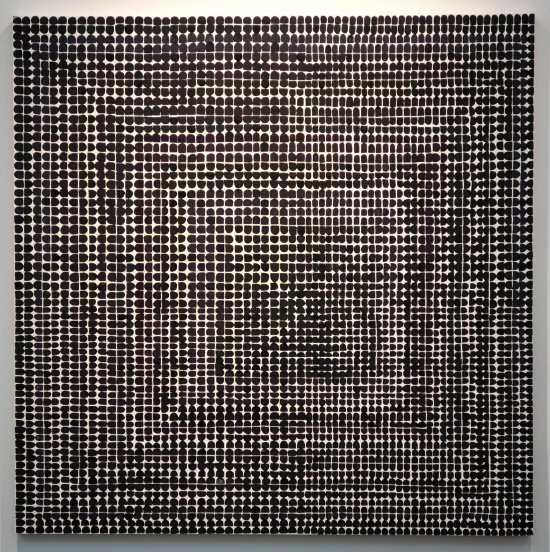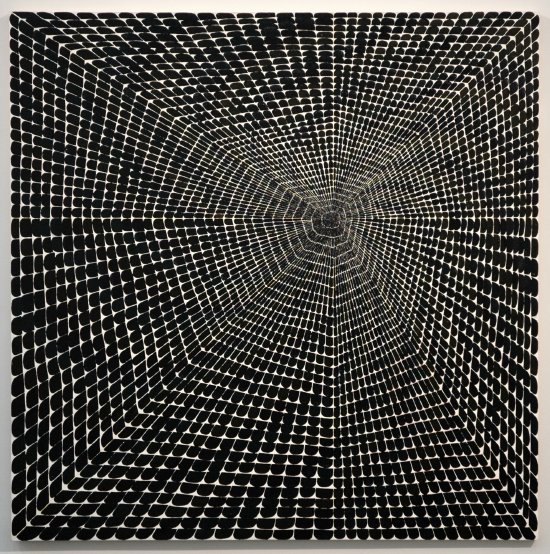
Xylor Janes Ruin [installation view]

Xylor Jane So Long [installation view]
Xylor Jane's second solo show at CANADA is a knockout, and the more I learn (well, "learn" may be too presumptious; "read" or "hear" would be more appropriate) about the artist and her art the more I'm pulled into its beauty and its mystery. I feel a similar connection to Chris Martin's work, but it would take someone with far better creds than I to explain what that's all about, or in fact what's going on inside the work of either artist.
Even my camera seemed possessed when it had to deal with Jane's paintings yesterday: The smaller images on the camera back and on the computer screen clearly revealed colors and shapes which were barely apparent to my naked eye when I stood in front of these two seemingly monochromatic paintings, and they are barely visible even in these uploaded shots. Incidentally, two of the three other paintings in the exhibition are more obviously colorful than the pair I've chosen to include here.
The works are each approximately three or four feet square.
Check the paragraphs from the press release included on the ArtCal event page. I've also included below the artist's notes [punctuation and capitalization as found] for the two paintings represented by the images above, and after that, some of Jane's general notes for all of the paintings.
Ruin
The strokes face either in or out, changing with each year along with the hue
584 weeks
11.22 years
Art Career in Black and Velvet
Failure misery demise
Time prison, blocks of years
So Long
structured on a 16-sided polygon that squares itself at the edge
8x16x32 it has a stutter that allows the seven hues to be in order (on the vertical and horizontal-) in both directions
it has 4096 strokes facing out
Strokes radiate from skewed center, growing larger.
Black rainbow waves an Infinite good bye
General info for all paintings
Brush is reloaded for each stroke
Each stroke represents one day
All begin at a center - clockwise moving
Each painting should be turned a quarter turn clockwise at each solstice or equinox marked on the side of the canvas so that the right side will indicate the season for that hanging direction
Monday = yellow
Tuesday = Green
Wednesday = blue
Thursday = indigo
Friday = violet
Saturday = red
Sunday = orange